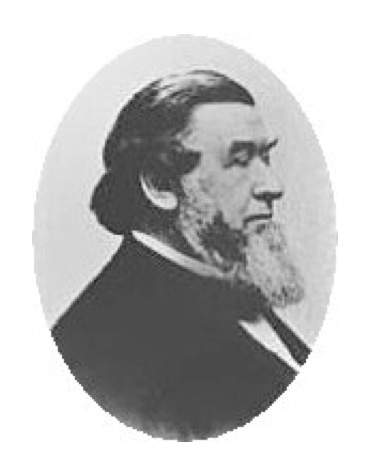DIXI CROSBY, M.D. (1800 – 1873)

Dixi Crosby, M.D. was an American surgeon and educator at Dartmouth College. He created a new technique for reducing metacarpophalangeal dislocation and was the first surgeon to open an abscess at the hip joint. Crosby was also the first surgeon in the United States to be sued for medical malpractice.
Crosby was born in Sandwich, New Hampshire. His parents were Dr. Asa Crosby and Betsey (Hoit) Crosby. Just before his birth, there was concern among his parents. Asa wanted a boy and Betsey wanted a girl. It turned out the new baby was a boy and Asa, the elated father, exclaimed “Dixi” in an overjoyed voice (Latin Dixi, “I told you so”). Dixi became the child’s name.
He received the typical education of the time when he grew up in the village where the family lived. It is not known if he was a graduate of any school. He did go into his own ventures to make money when youthful, but failed due to lack of experience in business. He then pursued his father’s trade as a surgeon.
Crosby was 20 when he took up the study of medicine with his father. He began practicing surgery within a year from when he seriously took up his medical training. One example of a successful surgery in his first year of practice was when he performed an amputation of a leg to save a patient. His father and other surgeons had already declared that the patient could not survive such an operation – but Crosby saved his life.
He studied at Dartmouth Medical School and eventually received his degree from that college in 1824. He practiced his medical profession for fourteen years in various places within the state of New Hampshire and then moved to Hanover, New Hampshire. He was promoted in 1838 to the chair of surgery at the Dartmouth Medical School, which position he held until 1841. To this position was added obstetrics and other diseases of women and children. He lectured in these fields for 27 years. Crosby led the successful drive to found a society supporting total abstinence from alcohol at Dartmouth in 1844.
Crosby was cumbersome and awkward in his walk, although a well-dressed man. He had a large head with his hair in back reaching his coat collar. He had a curly shaggy reddish beard that was never combed, and kept his upper lip clean-shaven so that no hair would obstruct his lecture speaking in the medical school. He had a positive attitude that was especially apparent when he talked as he walked. Always an innovator, Crosby created a new technique of reducing metacarpophalangeal dislocation.
Dr. Crosby is associated with two “firsts” in the medical field – he was the first surgeon to open an abscess at the hip joint, and he was also the first surgeon in the United States to be sued for medical malpractice. The following details of that dubious honor are taken from the book by Constance Putnam, entitled “The Science We Have Loved and Taught: Dartmouth’s Medical School’s First Two Centuries:”
“… Crosby was sued by a patient whose leg he had set. When subsequent abscess and gangrene resulted in a shortening of the patient’s leg, the patient decided to sue – eight years later! The verdict initially went against Crosby (for $800), but he won on appeal… The case attracted attention throughout the entire nation, because… it was the first case in which a consulting surgeon had ever been sued for malpractice… When it was all over, (he) received congratulations from the entire medical profession in this country, and many kind letters from Europe.”
Crosby served in the provost marshal’s office by day during the Civil War, and attended to his medical practice at night.
The honorary doctor’s degree of LL.D. was given to him by Dartmouth College in 1867. He ultimately turned over his medical lectures in 1868 to his assistant. Crosby retired in 1870 and was appointed emeritus professor of surgery. He lectured then from time to time whenever he desired, until his death in Hanover, New Hampshire in 1873.
